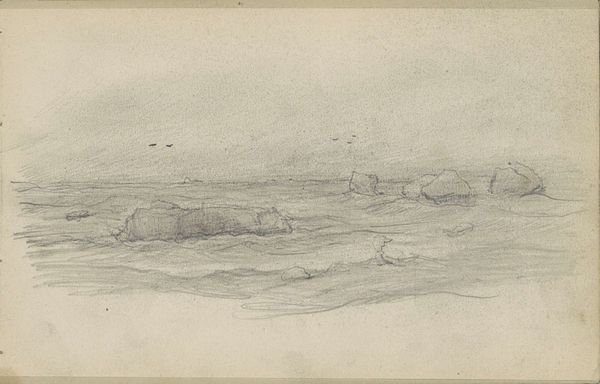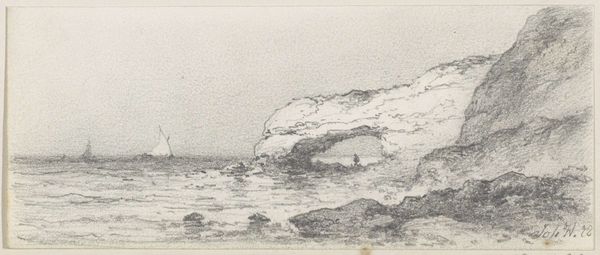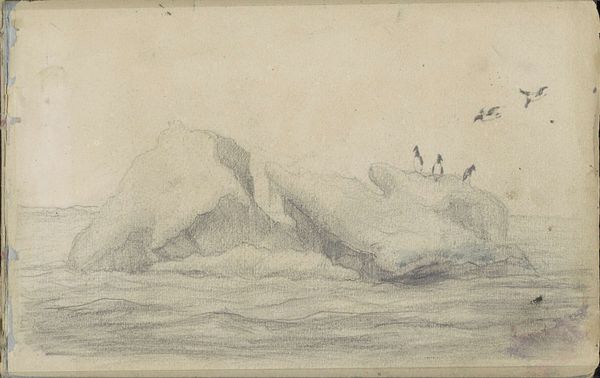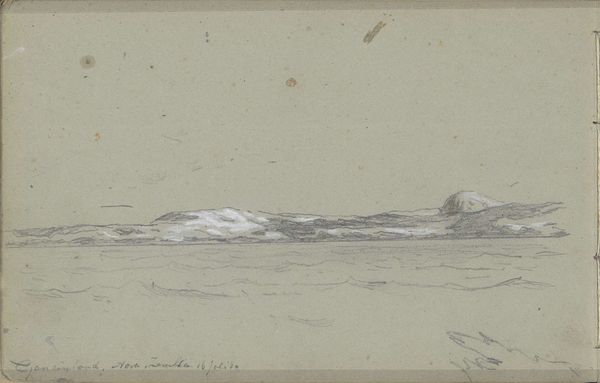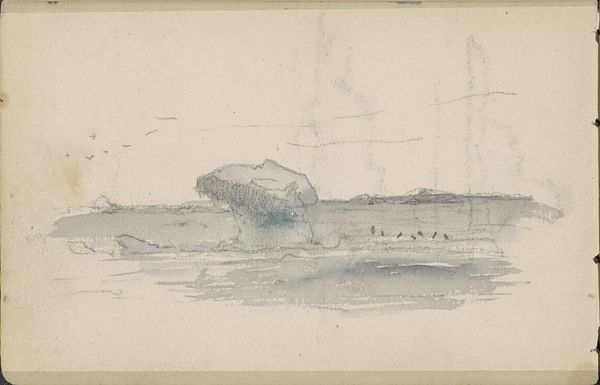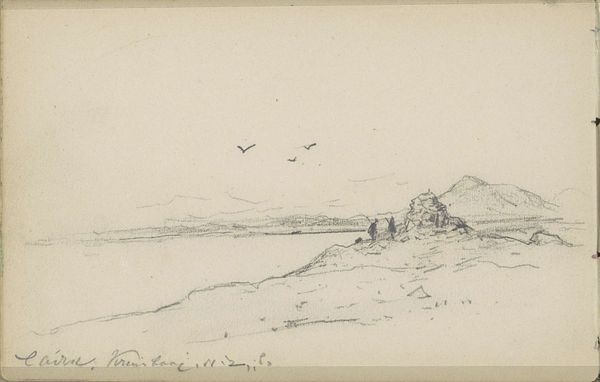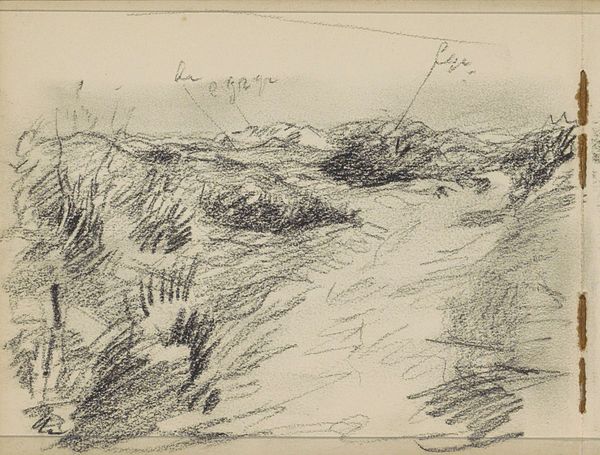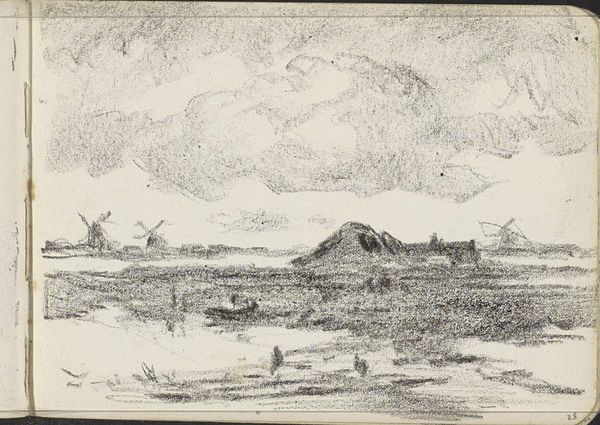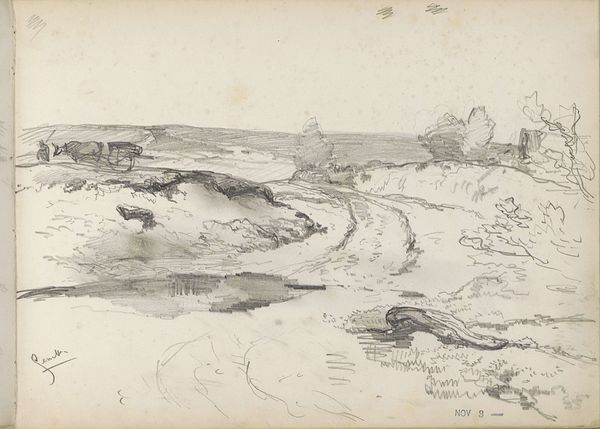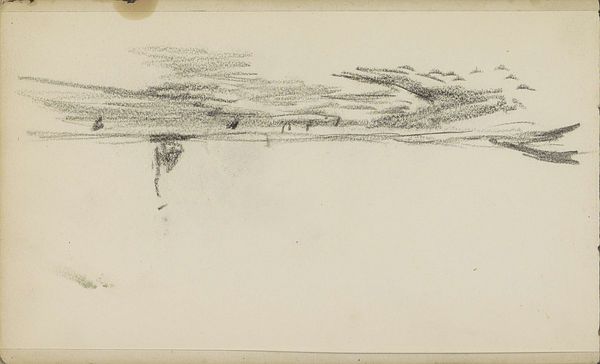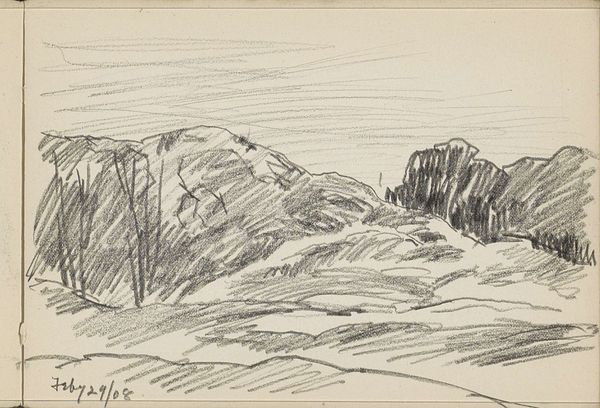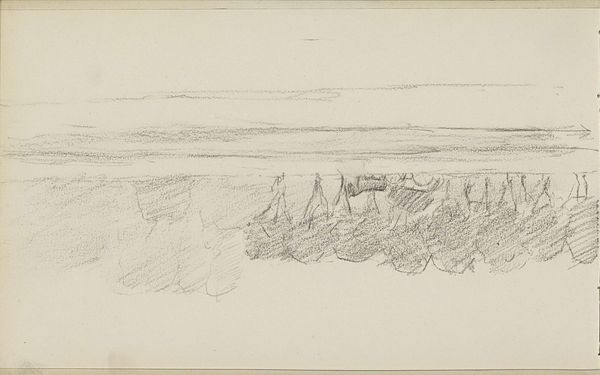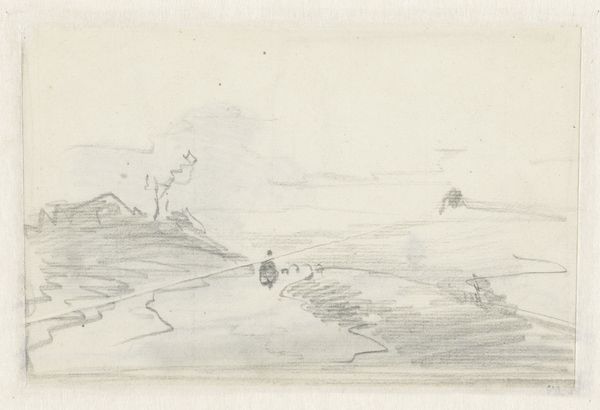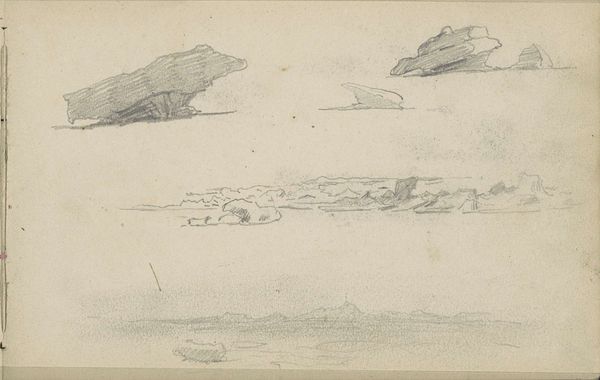
Copyright: Rijks Museum: Open Domain
Curator: This drawing is entitled "View of the Barents Sea with Ice Floes and an Iceberg." It's by Louis Apol, dating to 1880 and rendered in pencil. It's quite impressive how the artist managed to capture the scene's bleakness. Editor: Stark, definitely, and brooding. I'm struck by the pervasive grey, the quiet yet powerful lines hinting at the imposing cold of the arctic. It feels so...desolate. Curator: The context of Apol's work is essential here. Think about the late 19th century: burgeoning industrialization, expanding global exploration. These arctic scenes, then, become symbolic of confronting the sublime power of nature, something against which humanity measures its achievements. The scene can be read as a quiet statement about our vulnerability. Editor: I'm immediately drawn to the iceberg itself; how the artist utilizes shadow and line to carve out the arch. Structurally, that arch provides a focal point, and yet there's an emptiness within it that evokes this sublime terror you describe. It is not so much a view of arctic life as it is of the raw material from which life with all its socio-political inequalities originate, i.e. natural resources. Curator: Absolutely. And it’s crucial to acknowledge that Apol wasn’t just objectively portraying what he saw; he was actively shaping a narrative. Remember, this was a time when national identity and colonial ambitions were being solidified through art. Editor: Yes. Considering this landscape, there’s such a tension between the fine details rendered and the immeasurable expanse implied, and this heightens the emotional impact. A couple of seabirds hover above and perhaps some more are seated on top of the arc but they add little relief and do not change our viewing that we, the human element are alone in our smallness facing these global, natural forces. Curator: I appreciate that reading. By contemplating the power of nature in 1880 and in 2024, in an era dominated by an awareness of anthropogenic climate change, we may reframe these Arctic voyages not only in nationalistic but in ecological terms and view artworks like this as important precursors. Editor: Indeed. A drawing like this is a valuable meditation on our present. It challenges us to observe how the aesthetics of perception have historically formed our understanding.
Comments
No comments
Be the first to comment and join the conversation on the ultimate creative platform.
